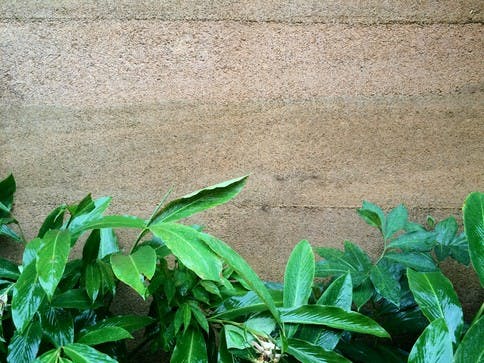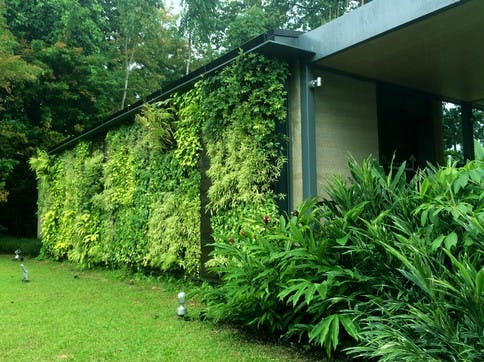Keeping botanical and historical artefacts intact in Singapore’s tropical climate is a challenging task for any museum curator. Now try achieving cool temperatures and low humidity levels without using energy from the grid, and the goal might seem impossible to achieve.
But this has not been the case for City Developments Limited (CDL), which recently completed Singapore’s first zero-energy gallery at the iconic Singapore Botanic Gardens. That is, it does not use more energy than what can be generated on-site by renewable sources.
Delegates at this week’s International Green Building Conference in Singapore were given a glimpse into the workings behind the Gallery that helped it clinch the highest rating under the Building and Construction Authority’s (BCA) Green Mark certification scheme for buildings.
Launched last November, the Gallery features ground-breaking building and construction technologies to achieve zero energy use and zero use of potable water for daily operations.
BCA chief executive John Keung, commenting on the Gallery, noted that “with the seamless integration of a modern green building into the natural environment, as well as the Heritage Museum, this building has placed itself in a unique position to promote both environmental and cultural sustainability.”
From the onset, the task of building an air conditioned gallery while meeting high energy performance requirements was complicated by the Gallery’s location in the heart of the Botanic Gardens. The construction process would therefore have to take place without disrupting the experience of park goers or having a major impact on its natural surroundings, CDL said.
Furthermore, extensive piling was not possible due to the Gallery’s location above an underground carpark, and detailed blueprints of the area were also not readily available because the garden was so old, according to CDL project manager Alfred Ng, who hosted the site visit.
Two cutting-edge technologies that helped CDL overcome these challenges were the use of ‘Hempcrete’ – a biomaterial made from hemp (imported from Australia and declared legal by Singapore’s Central Narcotics Bureau), water, lime, and sand – and a prefabricated, modular construction system.
CDL worked with partners in the landscape and construction communities to derive a composition of Hempcrete that was suitable for tropical environments. The resulting material, which was used to make all the external surfaces of the gallery, is known for its high thermal efficiency, which help keeps indoor temperatures low. The material is also resistant to pests, fire, mould and mildew, enabling the Gallery to be a low-maintenance, self-sustaining structure.

A close-up look at Hempcrete, a durable and high thermal performance alternative to concrete. Image: Eco-Business
“
The opportunity to build the CDL Green Gallery @ SBG Heritage Museum allowed CDL to combine our green building expertise and networks with our passion points in community outreach, environmental conservation and promoting the arts.
Esther An, chief sustainability officer, City Developments Limited
The 314 square metres Gallery was put together on-site in a short 24-hour period, thanks to a prefabricated modular system. The steel components that make up the building blocks of the building are assembled at an off-site production facility, and then hoisted by a crane into position at the gardens.
Not only does the modular system assemble quickly and reduce environmental impact on its surroundings, its individual building blocks can be expanded and modified in the future.
An additional feature that earned the gallery its sustainability accolades is an installation of 105 solar panels on the roof that generate 31,000 kilowatt hours (kWh) of energy a year – this is actually more than the Gallery’s estimated annual energy consumption of about 30,000 kWh.
The Gallery’s walls and roofs are also covered with plants that are drought resistant and encourage biodiversity by attracting butterflies. Even though these plants need to be irrigated twice a day, the Gallery boasts zero use of potable water. The water comes from the nearby Swan Lake instead, explained Ng.
 More than a quarter of the CDL Green Gallery’s wall and roof surfaces are covered with greenery, which encourages biodiversity and also improves the thermal insulation of the building. Image: Eco-Business
More than a quarter of the CDL Green Gallery’s wall and roof surfaces are covered with greenery, which encourages biodiversity and also improves the thermal insulation of the building. Image: Eco-Business
The Gallery, which cost CDL $1 million to construct, is also fitted with LED lights that use 57 per cent less energy than conventional lighting, and energy-saving air conditioning that uses half the energy of other models.
It was opened last year with an exhibition on the history of Singapore’s 50-year long environmental movement, and is currently home to ‘Ilham Alam’, an exhibition on the use of herbs and plants for healing practices in the Malay community.
CDL chief sustainability officer, Esther An, said that the opportunity to build the gallery “allowed CDL to combine our green building expertise and networks with our passion points in community outreach, environmental conservation and promoting the arts.”
Our special event coverage of the International Green Building Conference 2014 is brought to you by City Developments Limited (CDL).





















